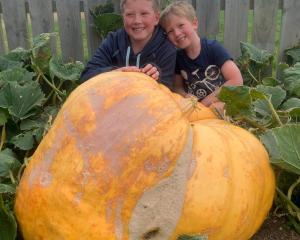Now that pepper is ubiquitous, it's hard to believe the demand for it drove Arab and European explorers to brave the dangers of the unknown and build and destroy empires.
Traces of this can be found on the lush green Malabar coast of southwest India, with its golden sandy beaches, coconut palms and ancient buildings. In search of the history of the spice trade and its modern incarnation, we found ourselves walking through one of the centuries-old godowns (warehouses) in Jewtown in Mattancherry, Cochin.
At the end of a long, cool passage, a relief from the heat and humidity outside, we found Mr Kishore, known locally as the king of pepper, of Kishore Spices Co in a small office, one eye and ear on the computer screen monitoring the fluctuating prices of pepper being traded online, while he talked to us.
Outside his window was a quay where once Arab dhows or European sailing ships might have berthed to load or unload their precious cargo, and in the empty rooms either side of the long passage pepper, ginger and other spices were once sorted and graded.
Now, most of that is done elsewhere and the production of pepper in India is declining as young people, who are more educated than their parents, want to move to cities, according to Mr Kishore. It's a problem that affects not only spice farming but all agriculture in India.
Vietnam is now the world's biggest producer of pepper.
However, Indians are setting up pepper-processing factories there and all over the world, he says.
It's the latest chapter in a centuries-old trade that can be traced back to ancient Egyptian times. Roman traders left numerous coins in Kerala, and in the first millennium AD, Syrian Christians, Baghdadi Jews and Arab traders sailed their dhows on the monsoon winds across the Arabian Sea to trade for pepper, cardamom and other spices.
Muslim descendants of Arab traders, different from other Indian Muslims descended from the Moguls who invaded from the northwest in the Middle Ages, still live on the Malabar Coast, and there's also a strong Syrian Christian community.
However, only half a dozen Jewish families remain, most having emigrated to Israel. Even Chinese traders left their mark in the great insect-like fishing nets along the shore, which are still worked at high tide.
Then, in 1498, came the Portuguese, in 1663, the Dutch, and the British, who captured the town in 1795.
But despite the comings and goings, the spice trade went on. Even so, about 90% of India's spices are not exported but are eaten by its own people.
These days, the old spice-trading area of Jewtown is more of a tourist trap, with the Mattancherry Palace and the Old Synagogue attracting visitors and the numerous shops selling handcrafts, antiques and cute packets of spices to tourists.
The quays are now restaurant strips, but down alleys the smell of pepper can still be caught on the breeze and we saw piles of ginger of various grades stacked in some of the old godowns waiting for buyers.
Even the old Pepper Exchange, once the centre of chaotic trading with buyers and sellers shouting their contracts and bids, is quiet now that most spices are traded electronically.
Spices are warehoused elsewhere and loaded on to container ships in the large modern port of Ernakulam across the bay.
Spices, tea and rubber are the main crops in the steep hills behind the city.
However, unlike tea and rubber, which are grown in large plantations, spice gardens are usually small and the farmers poor, according to Dr P.S.S. Thampi, deputy director, publicity, of the Spices Board, a department of the Government of India.
The board, which has its headquarters in Ernakulam, has wide-ranging responsibilities, from promoting Indian spices at home and overseas, licensing exporters and dealing with international trade and regulatory organisations, to research and development, encouraging integrated pest management and organics and even helping small farmers by promoting hygienic and environmentally friendly practices like subsidising bamboo mats or tarpaulins on which to dry spices, instead of on the ground.
One of the recent innovations has been to introduce an online cardamom auction system. Farmers can specify a reserve price, traders can't manipulate prices, and cutting out middlemen means farmers get more for their crop, Dr Thampi says.
Each Indian state specialises in different spices that suit its climate and soils, but here, in Kerala in the Western Ghats that rise a couple of thousand metres behind the waterway-laced narrow western plain, are the Cardamom Hills.
Cardamom and pepper are traditional, but now they also grow vanilla, tumeric, allspice, cocoa, coffee, cinnamon, ginger, nutmeg, mace and cloves, many of which have been introduced, some by the East India Company in British times, and others, like the
high-value vanilla, more recently to help improve subsistence farmers' incomes.
It's a grind
Not all spices are sold whole. Many are ground and blended into various curry powders and masalas, but the industry is also in tune with modern food processing and produces spice extracts.
Synthite is one of India's biggest spice-processing companies with factories near Cochin and also at Coimbatore in Tamil Nadu and at Calicut in northern Kerala.
It extracts oils and oleoresins, colours and flavours from spices and flowers.
Many of the ingredients are imported, processed and exported again, as India cannot provide enough raw materials, according to Mr C. V. Jacob, who founded the company about 35 years ago. It is still a family business with his two sons and two sons-in-law running the operation, which turns over about $US75 million a year.
He has found time to help develop the Cochin International Airport and, at 75, he still comes into the factory every day. He knows all his 1000 or so staff by name. He regards them as his "boys'' and, like plantation owners, provides schooling, medical care, help with housing and other benefits such as motorbikes or cars.
The factory near Cochin is large, clean and organised, a contrast to the India outside the gates. It has to be because it is a food-processing plant manufacturing under FDA and EU specifications and meets several international ISO standards.
A brightly coloured truck piled high with sacks of red chillies is being unloaded in one corner of the area and the chillies tipped into hoppers. They will be cleaned, deseeded, and the colour and capsacin extracted from them.
In another building, you sneeze because of the pepper being processed. The boilers that provide the steam and run the generator burn spice waste - 15% of pepper is oil that that can be extracted which leaves 85% as waste, according to Mr Jacob.
Most of the oils and oleoresins are extracted with solvents that then have to be removed, but a shiny new machine from China uses supercritical carbon dioxide which produces a superior product, although it is more expensive.
A smart new building nearby holds a couple of floors of internationally accredited laboratories which manage the quality control, match customers' samples and work on research and development.
The products are used in food and other products - the extracts of jasmine and tuberose go to the French perfume industry; colour from marigolds is used in chicken feed to give the flesh and yolks a brighter yellow colour; yellow from tumeric is used in drinks like mango and pineapple juice; red from chillies is used as a natural colouring for food and other products; herb and spice extracts are used in pharmaceuticals and added to foods as flavourings and supplements.
It's all spice In New Zealand, we actually use few spices from India. The two largest distributors are Greggs and Masterfoods.
Greggs gets its allspice from Jamaica, Mexico or Honduras, cardamom from Guatemala, cinnamon, tumeric, ginger and sometimes nutmeg from India, cloves, mace and sometimes nutmeg from Indonesia, and pepper from Vietnam.
Masterfoods says its pepper comes from Malaysia, Indonesia or India, tumeric from India, cardamom from Guatemala, allspice from Jamaica, cinnamon from the Seychelles, ginger from China and cloves from Madagascar.











